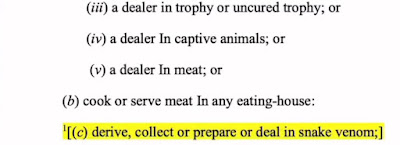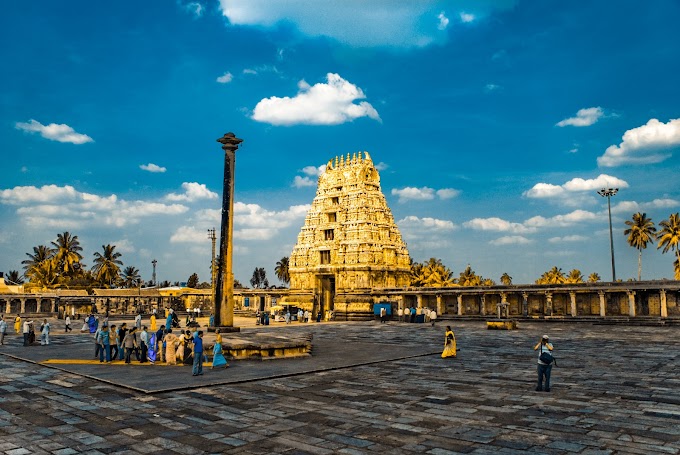In a surprising turn of events, Elvish Yadav, a Big Boss winner and renowned YouTuber, along with five others, was arrested by the Noida police on charges of allegedly using "snake venom" at rave parties. This incident has stirred quite a buzz, and in this article, we will delve into the details, the legal implications, and the potential dangers of such a peculiar practice.
The Unusual Arrest
Elvish Yadav, a popular YouTuber known for his entertaining content, was taken into custody alongside five others on a rather unusual charge. The police apprehended them during a gathering at a banquet hall in Noida's Sector 51, where they had unknowingly walked into a sting operation set up by the animal rights group People for Animals (PFA). The reason behind this operation? Allegations of using "snake venom" as a recreational drug.
VEDIO CLIP:
Snake Venom: A Dangerous Choice
Using snake venom as a recreational substance is an uncommon and exceedingly perilous practice in India. The individuals arrested in this case had no idea about the potential life-threatening risks associated with such a choice. But what exactly does the FIR say, and what legal ramifications are involved?
The FIR and Legal Implications
An FIR was filed based on a complaint by Gaurav Gupta from People for Animals (PFA), an organization associated with BJP parliamentarian Maneka Gandhi. The FIR includes charges under the Wildlife (Protection) Act and alleged criminal conspiracy. This raises questions about the possession and use of snake venom for non-medical purposes, which isn't just dangerous but also illegal.
The Absence of the NDPS Act
The Narcotic Drugs and Psychotropic Substances (NDPS) Act of 1985 typically regulates the possession of drugs, including substances like snake venom or other controlled substances. Surprisingly, in this particular case, the NDPS Act has not been invoked as no drugs, in the traditional sense, were discovered at the scene.
Maneka Gandhi's Allegations
Maneka Gandhi, affiliated with PFA, alleges that Elvish Yadav's agent supplied cobra venom to the rave party. According to the Wildlife (Protection) Act, 1972, cobras are considered Schedule 1 animals, and their hunting or venom extraction is a punishable offense.
She claims that her NGO's representatives directly contacted Elvish Yadav, the popular YouTuber, regarding the arrangements for the rave party. Allegedly, Elvish Yadav's agent, Rahul, was the one who supplied cobra venom to the location where the party took place.
These allegations carry significant legal implications, as they pertain to the Wildlife (Protection) Act of 1972. According to this act, both cobras and pythons are classified as Schedule 1 animals. Under this legal framework, hunting a Schedule 1 animal, deriving venom from a snake, or even possessing a Schedule 1 animal can lead to serious legal consequences, including the possibility of imprisonment.
What Is a Rave Party?
To better understand the context of this case, it's essential to know what a rave party is. Rave parties are energetic, night-long electronic dance music events known for immersive music, elaborate lighting, and a strong sense of community. They often take place in various settings, with farmhouses being a popular choice. However, in India, the legality of such parties is often in question due to concerns about drug usage, noise disturbances, safety hazards, and public order violations.
The Dangers of Snake Venom as a 'Recreational Drug'
Substances like tobacco, cannabis, and opium have long been used for their mind-altering effects in recreational contexts. However, using snake venom for such purposes is a risky endeavor. Let's explore the potential dangers associated with this practice.
Case Study: Snake Venom Addiction
The Indian Journal of Pharmacology and Physiology discusses a case in which a teenager's "snake venom addiction" was studied. This young individual was involved in organizing rave parties where snake venom was used to enhance the effects of other substances. The case study reveals some concerning details:
Prevalence: Individuals attempting this form of abuse are primarily adolescents, although adults occasionally engage in it as well. They often display a strong dependence on multiple substances and seek a continuous "state of euphoria."
Obtaining Snakebites: Snakebites are typically obtained from nomadic tribespeople, slum snake charmers, and involve snake species such as the common krait, cobra, green snake, rat snake, and green vine.
Psychotropic Effects: The psychotropic effects following a snakebite vary from one individual to another. Common symptoms include an increased sense of well-being, lethargy, a heightened sense of grandiosity, blurred vision, dizziness, drowsiness, and intense and persistent euphoria. This state of intense arousal is also commonly experienced.
Biological Impact: Upon entering the human bloodstream, snake venom releases active metabolites with various psychotropic effects, including hypnotic and sedative properties.
Conclusion
Elvish Yadav's arrest for allegedly using snake venom at a rave party highlights the dangers of unconventional drug practices. It serves as a stark reminder of the potential risks and legal consequences associated with such activities. It is essential to stay informed about the laws and health hazards related to substance abuse.
FAQ's
Q1: Is using snake venom a common practice in India?
Ans: No, using snake venom as a recreational drug is not common in India. It is an unusual and highly dangerous practice that carries potentially life-threatening risks.
Q2: What legal actions can be taken against those using snake venom as a recreational drug?
Ans: Legal actions can be taken under the Wildlife (Protection) Act and for alleged criminal conspiracy. The Narcotic Drugs and Psychotropic Substances (NDPS) Act of 1985 typically regulates the possession of drugs, but it may not be invoked in cases involving snake venom if no traditional drugs are found at the scene.
Q3: How can we educate young individuals about the dangers of such practices?
Ans: Education and awareness campaigns, both in schools and through public awareness programs, can play a crucial role in informing young individuals about the dangers of using snake venom or other substances for recreational purposes. Highlighting the legal and health risks is essential.
Q4: Are there any therapeutic uses of snake venom?
Ans: Yes, snake venom has some therapeutic applications in the medical field, particularly in the development of antivenom and certain pharmaceuticals. However, these uses are highly specialized and should only be administered by qualified medical professionals.
Q5: What should partygoers be aware of to ensure their safety at rave parties?
Ans: Partygoers should be aware of the potential risks associated with attending rave parties, including drug usage, noise disturbances, safety hazards, and public order violations. It's essential to exercise caution, follow the law, and prioritize personal safety when attending such events.
Q6: What legal implications do the individuals face under the Wildlife (Protection) Act, 1972?
Ans: The Wildlife (Protection) Act of 1972 classifies cobras and pythons as Schedule 1 animals. Under this act, hunting a Schedule 1 animal, deriving venom from a snake, or possessing a Schedule 1 animal is a punishable offense, potentially leading to imprisonment.
Also, Read
Elvish Yadav and Abhishek: Reuniting on Temptation Island Show












